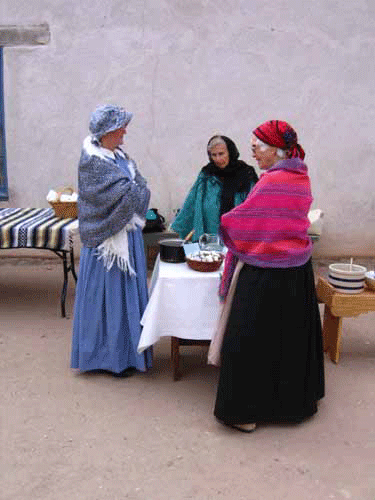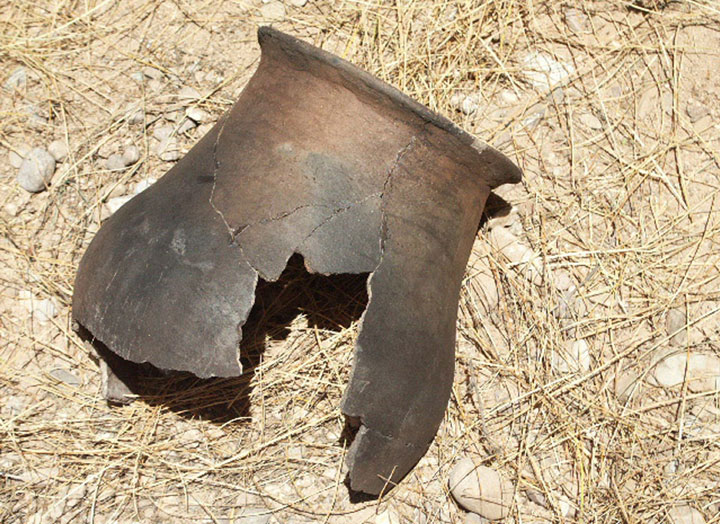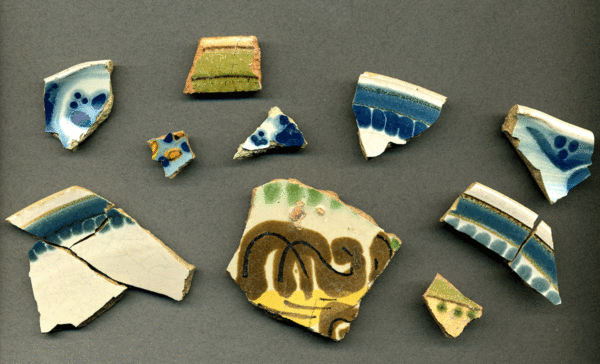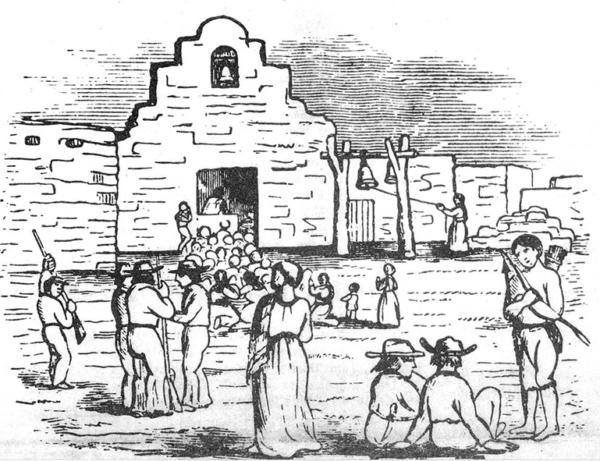
Women in the Presidio San Agustín del Tucson
Homer Thiel examines the lives of people who have often been rendered invisible in history: the women who lived in the Tucson Presidio in the 18th and 19th centuries.
Tucson, Arizona was a Spanish and Mexican military fortress (the Presidio San Agustín del Tucson) between 1776 and 1856. During this 80-year time span, hundreds of soldiers were stationed at the Presidio. Surviving documents tell us quite a lot about these men. We know their names and what sorts of activities they did, and can follow a few of them from birth to death. But what about the female residents of the Presidio? What was life like for them? We have very few documents written by women because few could read or write, the exception being the wives and daughters of officers.
The 1797 census is a starting point to explore their lives. A total of 394 persons lived in the Presidio in that year. The document provides the names of adults, but only gives counts for servants and children. At that time there was 102 soldiers, 71 of them with wives. The military households contained 64 sons, 60 daughters, 10 male servants, and three female servants. There were 21 male-headed civilian households, 20 of which included wives. There were also 20 boys, 18 girls, four male servants, and one maidservant in these households.
These numbers mean at least 95 adult women were living in the Tucson Presidio (some of the 78 daughters may also have been adults). From a few surviving marriage records from the 1830s and 1840s, we know that women usually married in their late teens or early twenties. In some cases, the nearest priest would conduct a prenuptial investigation. The potential groom and bride were interviewed as well as three other witnesses who testified to the character of the couple and whether they were closely related. After foreign-born priests were expelled from Mexico in 1828, the priest from the mission San Xavier del Bac traveled north to marry couples, or the couples headed south to the town of Magdalena, Sonora to be married in one of the two churches there.

Members of the Presidio Trust in costume.
Women began to have children soon after marriage. Typically, a child showed up every two years. Babies were breast-fed for the first year and a half, and once weaning took place a woman’s fertility increased and another pregnancy ensued. Ramona Elias de León (1823-1904) had at least 12 children between 1843 and 1869. Ramona’s mother Concepción Apodaca de Elias (1773-circa 1862) had at least eight between 1801 and 1823. Other women had smaller families. The danger of complications from childbirth was probably always on the mind of the women who acted as midwives at the Presidio.

A Spanish era family.
One might expect houses overflowing with children, but child mortality was very high. Ramona Elias de León lost four of her 12 children in infancy. A number of child mortuary features were discovered beneath W. Alameda Street in 1969 and 1970. These were studied prior to their recent reinterment in Holy Hope Cemetery in Tucson. The remains often had evidence of nutritional stress and infections. We also know that epidemics of cholera, measles, and smallpox killed many children. In 1851, a quarter of Tucson’s population, about 125 people, died in a short period of time from a cholera epidemic. Households often included orphaned children and other family members.
Surviving children were put to work as soon as they were old enough. Boys were sent out to agricultural fields on the nearby floodplain to tend to crops, guard cattle and sheep, and to kill rabbits, rodents, and birds that came to the fields looking for a meal.
Women taught their daughters, granddaughters, and nieces practical skills. These included cooking, sewing and repairing clothes, when to plant gardens, and how to preserve food. In the fall, strings of chili peppers and strips of pumpkins and squash were hung out or placed on roofs to dry. Warehouses along the inside walls of the fort held stored wheat and corn. One of the tasks for children was to follow behind the donkeys that powered the nearby mills. These equines walked around and around, making the upper millstone turn. The children occasionally poured grain down the hole at the top of the mill and collected and took home the resulting flour that poured out from a spout.
From archaeological finds we know that women cooked foods in Native American-made vessels. Most meals centered around soups and stews. Beef was the primary meat eaten. Wheat and corn tortillas were cooked on ceramic comals placed over trivets of stone set in the ground or in corner fireplaces inside houses. Cooking mostly took place outside except during the winter, when the burning wood helped provide warmth inside adobe brick houses. Large communal adobe brick ovens were scattered about the fort and were used to bake breads and cakes, as well as roast cuts of meat.

A Sobaipuri Pima (Native American) bean pot, used to cook soups and stews, from the Presidio San Agustín del Tucson (photo by Homer Thiel).
Women served most meals using majolica dishes manufactured in the Mexico City area. This trend continued throughout the history of the fort, suggesting that it was part of a woman’s cultural identity to do so.

<em>Majolica sherds, from vessels imported from Mexico City, found at the Presidio (photo by Homer Thiel).</em>
Women probably wove coarse woolen and cotton cloth inside the fort. They may also have made soap from beef tallow and lye extracted from wood ashes. Monthly pack trains from the Sonoran towns of Imuris and Arizpe brought luxuries such as cloth, buttons, beads, combs, dishes, and other items. The Presidio Comandante maintained a store, and surviving account books indicate soldiers often were in debt for the things they purchased there.
Religion was important to the residents of Tucson. Padre Pedro Antonio de Arriquibar (1745-1820), served as the military capellan (chaplain) from 1797 to 1820. He likely held services daily and the women probably helped clean and decorate the military chapel. Families may occasionally have traveled south to San Xavier to marvel at the beautiful paintings and statues and to attend mass.

A drawing of the military chapel at the Tucson Presidio, from June 1860.
The arrival of Americans from the eastern United States after the Gadsden Purchase, beginning in early 1855, brought significant changes for the women of Tucson. Many entered into relationships with these new men. Guadalupe Santa Cruz (1807-1891) ensured that her orphaned nieces Petra and Atanacia married two of the richest newcomers, Hiram Stevens and Samuel Hughes.

Guadalupe Santa Cruz flanked by her nieces Atanacia Santa Cruz de Hughes and Petra Santa Cruz de Stevens.
Today there are probably thousands of women living in Tucson who are descended from stalwart wives and mothers who endured the harsh conditions of the Presidio San Agustín del Tucson.
Resources
Learn more about the Presidio San Agustín del Tucson and how to visit in downtown Tucson.


